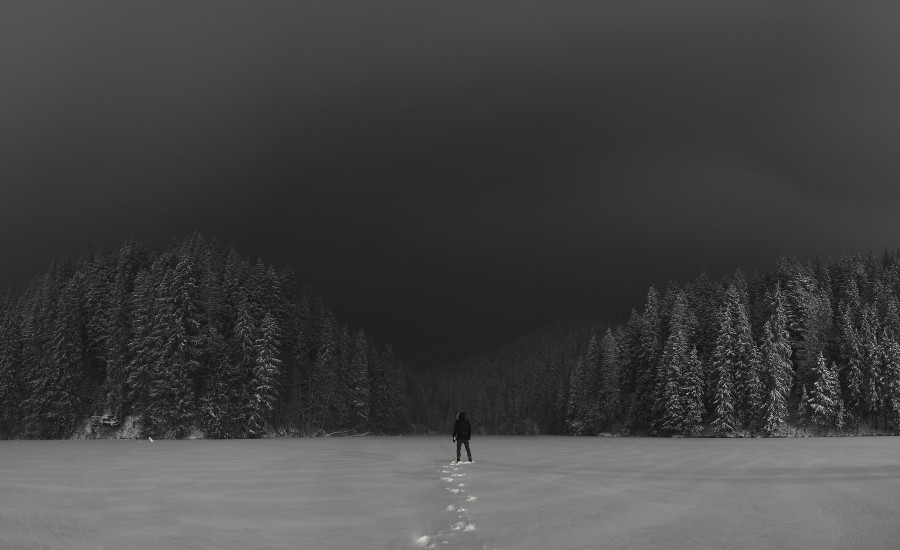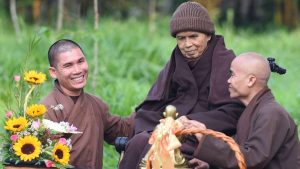
This is my first year experiencing snow in a long time. Before moving to the country, I lived in an apartment in the middle of a large city. Outside of walking to a restaurant for lunch, I spent most of my time indoors, so I didn’t walk in the snow very often. And when I did venture outdoors, the snow had been plowed and walked on by so many people that it was more of a dirty, icy slush.
So, this is my first year in a long time seeing snow as nature intended. On the day after a heavy snowfall, I like to stand on my back porch in the morning and look at the flawless blanket of white stuff stretching into the distance. I may even say a few words aloud and listen to the muffled sound of my voice in the cold air.
In the evening, I’ll stand on the porch once again and look at the snow. It’s still cold, and my words are still slightly muffled, but the snow is anything but flawless. Instead, it’s covered with footprints. And each set of prints tells a story.
By studying them, I see where the barn cats walk across the property. I see the path that the squirrels take when they steal from our bird feeders. And I see my own footprints from when I walk to the chicken coop and the barn.
Over time, these footprints turn into full-on trails. Humans and animals are creatures of habit. And it’s easier to walk in old footprints than it is to blaze a trail through fresh snow. By treading the same paths over and over again, we ensure there’s always a quick, safe way to get where we’re going no matter how deep the snow.
When I think of Buddhism, I’m reminded of footprints in the snow. The Buddhist ancestors that came before us had a difficult task. They had to find their way to enlightenment without any clear paths to follow. They moved through a world filled with traps and entanglements—marking the paths that led to awakening and avoiding the ones that led to damnation.
They stepped slowly and carefully through the untouched snow of spirituality, and took notes along the way. Showing grandmotherly compassion, they then shared those notes with us so that we could walk as they did—putting one foot in front of the other, all the way to enlightenment.
Of course, we don’t always follow their advice. Sometimes, we blaze our own trail through the icy tundra. And we step on that rusty rake that someone left by the barn or we trip over a log that’s buried beneath two feet of snow.
And it’s in those moments when we’ve wandered off the path, when we’re meandering toward our own destruction that the kindness of our teachers becomes evident. Because Buddhist scriptures don’t just tell us how to walk the path to awakening. They tell us how to find it when we’re lost.
And if we’re way out there in samsara, if we’re so lost that the idea of awakening has completely slipped our mind, they send out search parties. Individuals like Kannon—the Bodhisattva of Compassion—and Amida—the Buddha of Infinite Light—risk life and limb to reorient us to the teachings.
So there are three layers of protection for Buddhists walking through the snows of samsara. We have the examples and the teachings of Buddhists who’ve come before us. We have the Buddhist scriptures that show us how to get back on track if we have lost our way. And we have the bodhisattvas, who use their miracle powers to rescue us when we’re bogged down in the muck and mire of our lives.
This puts us in a wonderful position as spiritual practitioners. There are so many safeguards in place that the realization of enlightenment is almost guaranteed. Of course, that doesn’t mean that the journey will be easy. All of the warm weather gear in the world can’t stop us from being caught in a blizzard. However, it can help us weather the storm. More than that, it ensures that we recover quickly after digging ourselves out of the snow.
Similarly, traditional Buddhist practices, such as chanting, meditating, performing prostrations, and sutra study, don’t guarantee a life free from difficulty. However, if we engage in them—following the footprints of our Dharma ancestors—we are more prepared for the times when life gets hard. And when we’re wounded, the hurt is a little less. Thus, we’re able to restart our journey in a state of rejuvenation, firm in the resolve that if we keep walking, we’ll arrive at our destination.
These days, when I look out at the wintry expanse from my porch, my heart is filled with gratitude. I’m not grateful for the snow or the slippery ice. I don’t enjoy walking through my backyard and having the wind hurt my face. But I am grateful for all the footprints in the snow. I’m grateful for 2,600 years of Buddhist tradition that help me get where I’m going.
Namu Amida Butsu
Related features from BDG
Walking the Vajrayana Path
Ecstasy: The Path of Joy
Book Review: In the Footsteps of Bodhisattvas: Buddhist Teachings on the Essence of Meditation
The Faces of Kshitigarbha: A Book of Art about Hell’s Bodhisattva
Bodhisattva Work: Bringing One’s Heart to Financial and Life Planning
The Way of the Bodhisattva: A Tribute to Prof. Alexander Fedotoff














